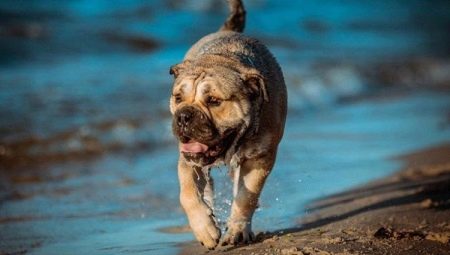Ca de bo is famous for its unusual appearance and is valued among dog breeders. For all its brutal and formidable appearance, such a dog can be friendly and faithful. The material in this article will introduce the reader to the history of the origin of the “bull dog”, its character, description of the standard and conditions of detention.
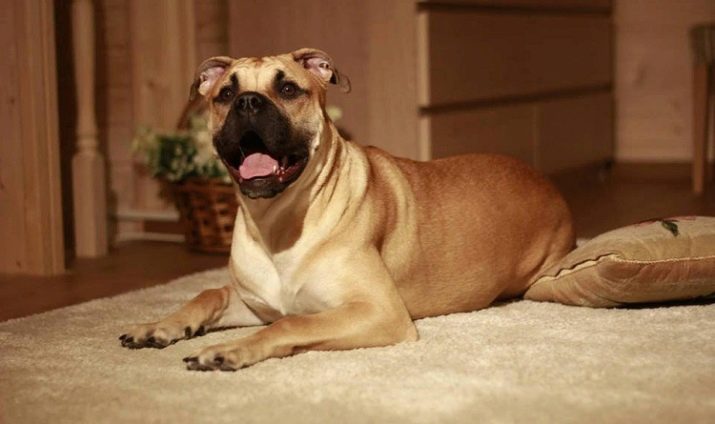
Appearance story
The country of origin of the Maoir mastiff is considered Spain. The breed was born at the beginning of the XIII century, during the conquest of the Aragonese king Jaime I by the Conqueror of the Almohad Moors. It was at that time that the ancestors of Ca de Bo — Molossian dogs — were brought to one of the conquered islands by the Aragonese. History does not exclude the possibility that Spanish, Pyrenean mastiffs and bulldogs, Bordeaux dogs can be among the possible ancestors.
Uncontrollability of mating led to the emergence of a breed with characteristic protective and fighting features. These animals began to be called ca-de-bestiars, which in translation from the Catalan language meant "dog driving cattle." In addition, security qualities were manifested in the protection of houses and port warehouses. The brutality of appearance appealed to aristocrats, in view of which dogs began to be used for hunting wild animals and big game.
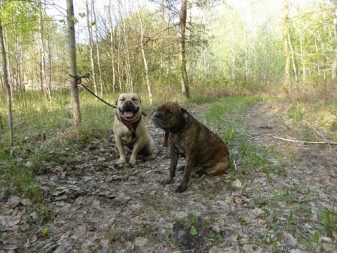
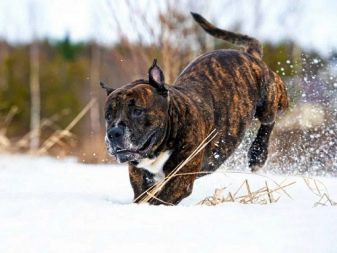
However, the breed continued to change its characteristics, and therefore the dogs differed from each other in size and external data. In the XVIII century, the Balearic Islands became part of the colony of the British, who generously shared with the locals the ideas of their leisure. Unfortunately, at this time a person creates real tyrants from the ancestors of the ca de bo. The sight that they prepared for the public was terrible.
In the arena, an angry bull was opposed by a man and a dog, from whom it was required to save the owner at the cost of his own life. The cruel public did not care about this, the dogs died in the first minutes of atrocious games. It was at this time that a man thought about the persecution of animals for his bloody ideas. Ca-de-bestiars were crossed with Old English bulldogs of an uncontrolled nature.
As a result, the dogs began to resemble modern Major Molossians, but they bred them for gladiatorial fights, contrasting bulls first and then other dogs. The selection of puppies was tough, people did not help dogs with problem births, no one nursed weak puppies, healthy were not protected from diseases. The breeders shifted the puppies' upbringing to a female, and therefore there was no need to talk about endurance and some kind of upbringing. Dogs grew aggressive, they did not know any socialization.
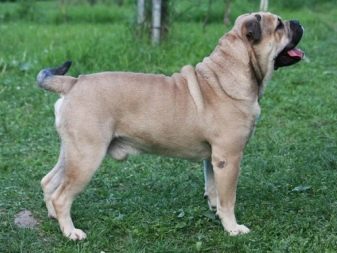
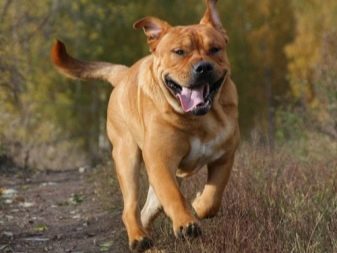
Cowardly individuals were destroyed, as were dogs that were seriously injured in battle. This selection allowed us to achieve a good gene pool. However, he also became the cause of the destruction of the livestock of thoroughbred dogs. By the beginning of the 20th century, their number did not exceed several tens. The remaining dogs, in addition to fighting games, were used as guards in cattle farms.
The breeders liked the excellent health and formidable appearance, and therefore the desire to increase the livestock became natural. This time, it was ensured that only Old English bulldogs and ca-de-bestiars of brindle color participated in the mating. Now attention was also paid to the exterior, medium-sized dogs were considered the standard, which was a rarity. The dogs received the name ca de bo in 1923, the dog of this breed first participated in the exhibition in 1929. Registration with the recognition of the standard took place in 1964.

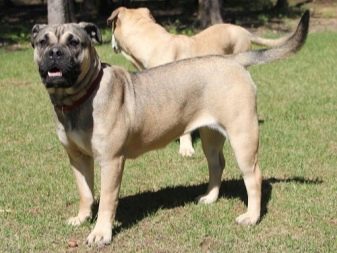
Breed characteristics
The Spanish Major mastiff looks similar to both the mastiff and the bulldog. The representative of the breed has a massive skeleton, a large physique, as well as a slightly elongated body. A characteristic feature of the breed is a pronounced sexual dimorphism: the head of males is larger and more voluminous.
The standard for this breed is quite strict and allows a certain growth of males and bitches. For example, in males it varies in the range of 55-58 cm, in females - from 52 to 55 cm. The head of dogs is large, its shape tends to square. The nape is sloping, the forehead is broad and flattened, the dividing furrow is deep, well traced. The weight of dogs depending on gender can vary in the range from 25 to 35 kg.
In this case, the female weighs less than the dog, and individual dogs reach 38 kg.
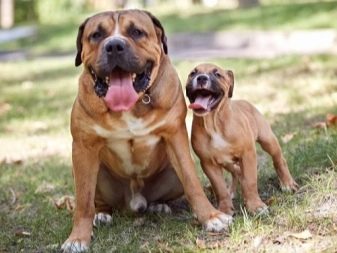
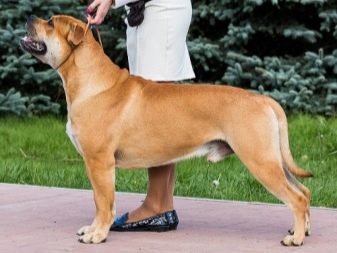
It is the physique, total weight and well-developed muscles that give the dog a formidable look. The nasal bones of the ca de bo are shortened, the jaws are massive, have pronounced masticatory muscles located under the folds. The nose is black, the nostrils are wide apart, the eyes are brownish, they are deep-set. The coat is short and tough, while the standard allows several types of color: deer (beige or red), black and brindle.
Someone calls the “bull dog” a Maltor bulldog, however, the breed belongs to the mastiffs, being one of their varieties. Their chest is rather deep, cylindrical, the tail is low. It is wide at the base and gradually tapers towards the end.
The musculature of the dog is clearly visible on the back and limbs.
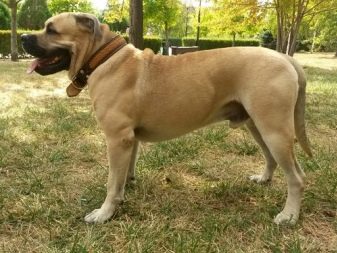
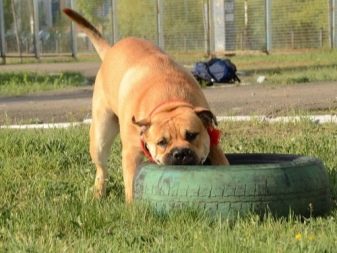
The paws are strong, the fingers are gathered in a lump, the pillows of the fingers are painted in dark color. The skin is thick, a small suspension is visible on the neck. The animal moves at a trot, interchanging the pairs of paws located diagonally. As for the color, the standard allows some deviations in the form of inclusions of white color, provided that their total area does not exceed one third of the body area. The following deviations are considered the smallest deviations from the standard:
- noticeable difference between the height at the withers and sacrum (growth at the withers should not be higher);
- incorrect position of the ears (they should neither stand nor hang);
- straight or scissor bite;
- tail shape like a bulldog;
- a void between the upper and lower teeth exceeding 1 cm;
- lack of some teeth.

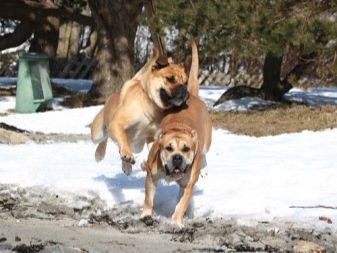
In addition, they disqualify these mastiffs for other reasons. For example, the iris of their eyes should not be too light or yellowish. Dogs should not be shy or overly angry, showing aggression for any reason. Today it is considered a developmental defect.
It is unacceptable to stop the ears or tail.
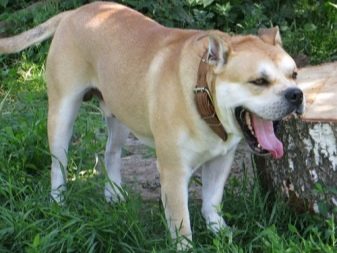
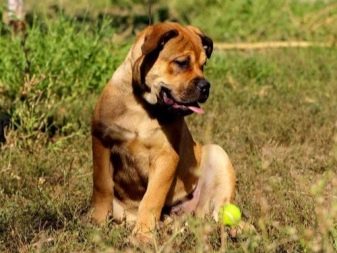
Nature and behavior
Anyone who sees the Spanish mastiff from afar, tries not to approach him, fearing his appearance. However, breeders have a different opinion, despite the fighting look of their pets. It is impossible to assert with absolute certainty that a dog is completely harmless and resembles a “divine dandelion”. It can be evil and uncontrollable, which can be explained by two reasons: the absence of any upbringing and socialization, as well as the preparation of the dog for forbidden dog fights. Therefore, the alertness of passers-by is quite justified.
If a dog is trained and raised from an early age, it does not develop aggression. Such an animal is characterized by psychological stability, restraint and calm. The dog perfectly understands the owner’s employment, and therefore tries not to insist on non-stop communication. He needs a master whom he will obey, who can become a true friend.
This person should be strong-willed, capable of raising a raised pet from a dog, building a trusting relationship between the dog and family members.
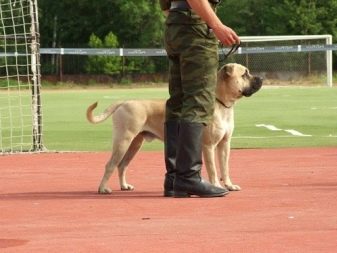
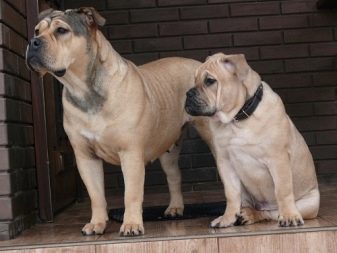
Ca-de-bo perfectly socializes and easily fits into a small team called the family. He can treat all household members well, respect them and try to obey. Unlike many freedom-loving brothers, representatives of this breed have a fine sense of the atmosphere prevailing in the family, and perfectly understand how to behave. These formidable brutals can not only rejoice in human happiness, but also empathize with their masters, if required by chance.
Being phlegmatic, Ca de Bo are not afraid of forced loneliness. They patiently wait for the return of the household, without letting their neighbors howl or bark. For waiting, it is important to provide the dogs with their own comfortable bed, a bowl of fresh food and water, as well as their favorite toy. However, a lot of behavior will depend on the owner and the timeliness of training.
If time is missed, the animal may show obstinacy and obstinacy.
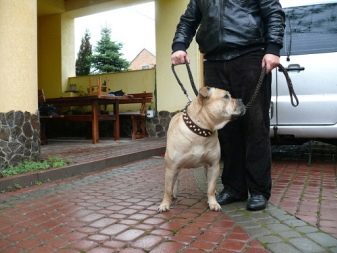
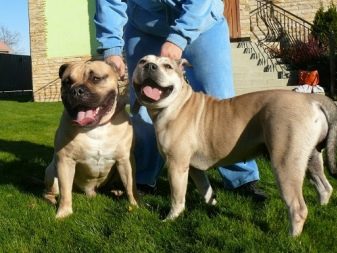
The peak of rebellion in the Ca de Bo falls on the period of youth and can last until puberty. This is manifested in persistent behavior: for example, a dog may try to win a bed, a sofa, dishes and other things from the owner, which will seem to him more interesting than his own. The dog can defend his point of view during this period for a long time. In view of this, the owners will have to stock up patience and perseverance, so that, not psychologically and physically pushing the pet, explain to him his place.
A properly trained dog can be an excellent guard and protector of the family. As a rule, smart dogs do not attack strangers, as well as ordinary passers-by. But if the guest steps over the boundaries of what is permitted in the house of the owners, the dog sometimes allows himself an independent decision-making. At first, he can look at a stranger for a long time, but there are cases when the animal switched to attack.
So that the dog does not allow itself to be superfluous, these shortcomings of education are eliminated by a special course of classes with a professional dog handler.
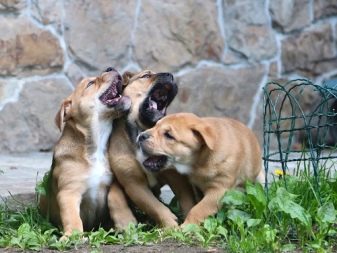

Major Mastiffs are loyal to children. They have iron patience, which is why they do not allow themselves to behave badly when they are near children. Even if they are poked painfully, dogs understand that it is not from evil. Pets love active games, although they can accidentally hurt children themselves, for example, knock them down when playing with the ball.
As for the neighborhood with their relatives, then this ca-de-bo are calm. They tolerate cats, but small domestic rodents and birds do not like, and sometimes, yielding to instincts, can perceive them as prey.
If the owner does not intend to remove the bird or the rodent from the house when buying a “bull dog” puppy, it is necessary to minimize the number of contacts with him.
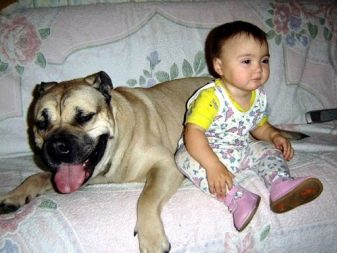

Ca de bo are incredibly active and mobile, and therefore it is difficult for them to be locked for long in four walls. They try to throw out their energy on walks, doing outdoor games and training together with the owner. Running helps to increase the endurance of dogs and strengthen immunity, in addition, the dog on walks needs both a ball and frisbee.
Dogs can be trained if it is built on trust: there should be no scream and physical punishment.
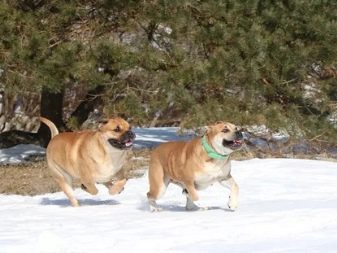
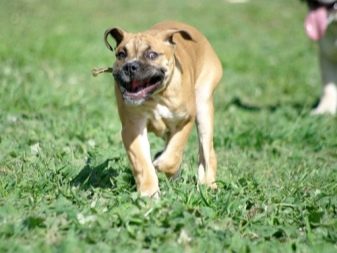
How to choose a puppy?
Choose a little puppy, based only on visual representations and emotions, recklessly. Not every person, when looking at him, realizes how much work and time will have to be invested in the baby so that he grows up as a friendly and well-mannered dog. This is a great responsibility, including to society, in which the dog must behave appropriately, without harming anyone or scaring anyone. Not every breeder has the necessary conditions of detention, many are simply busy, others even take puppies only in pursuit of fashion.
If the buyer remains true to his decision, he should think about buying a baby in a specialized nursery from a trusted breeder. Neither the bird market, nor the dubious seller on the Internet will guarantee that the buyer will get a thoroughbred puppy without defects. Often, in the pursuit of money, such breeders palm off unclean dogs, which often turns into the impossibility of visiting shows by pets.
Other dogs are crossed with uncontrollable dogs, and this is reflected in the behavior and character, transmitted from parent to puppy.
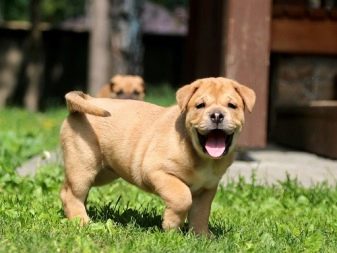
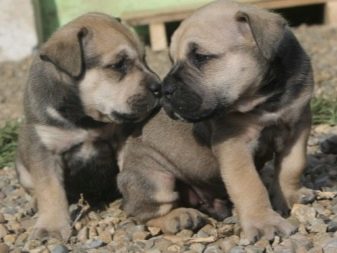
Before contacting the kennel, you need to visit a couple of dog shows. This will allow you to get to know this breed more closely, to understand how an animal looks that fits into the standard established by the regulations. There you can talk with breeders, browse catalogs, gathering valuable information, and select priority potential relatives.
The puppy of choice must be healthy, active, playful and inquisitive. Of course, the layman cannot decide for himself whether the puppy is healthy or has any malformations. Therefore, it is better to buy a dog with a specialist who understands this.
So the buyer is not slipped a purebred dog, and the expert will help you choose the individual, which in the future may take pride of place in exhibitions.
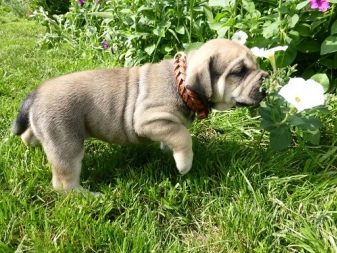
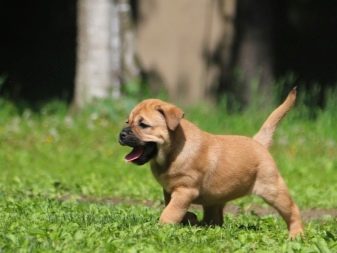
When buying, it is important to consider other aspects. For example, just looking at a puppy is not enough, you need more serious visual inspection. For example, a baby who has reached the age of 1-1.5 months should have all the baby teeth, it’s necessary to look into the mouth when buying.
In addition, a lump on the puppy's head can tell a lot about the future pet. It is she who gives the expert certain information, for example, her size correlates with the dimensions of the animal: the larger it is, the larger the dog. It is important to pay attention to the bite: it must be correct, a snack of more than 1 cm is considered unacceptable. Despite the small age of the pet, the inspection of its tail is also important: it should not have any creases.
Particular attention when buying should be paid to the color and volume of marks.

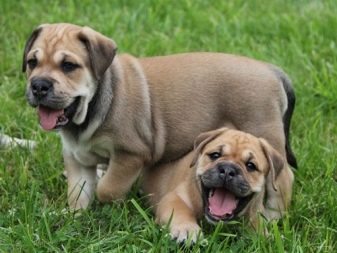
The average life span of dogs is 10 to 12 years. However, it can vary both upward and downward.The difference is determined by living conditions, proper care and maintenance, the presence of diseases, inattention to examinations and prevention of diseases.
To increase the life span of a pet, it is necessary to walk it more often, strengthen immunity, and provide vitamin complexes.
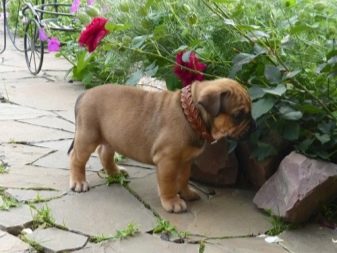
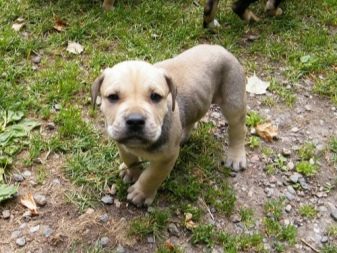
Conditions of detention
Like any other pet, ca-de-bo will require a lot of care, attention, affection, and also funds from its owners to buy their own things, equipment for walking, and food. It is a mistake to assume that, due to the short coat length, dogs do not need special care. In fact, their external indicators depend on how much regular care their owner provides. Everything is important: how correctly he feeds the pet, how often he leads to preventive examinations to the veterinarian, does he perform timely vaccinations.
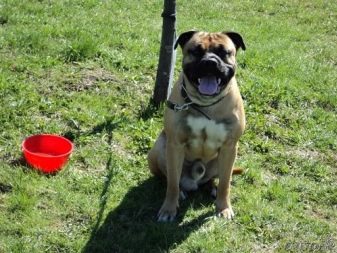
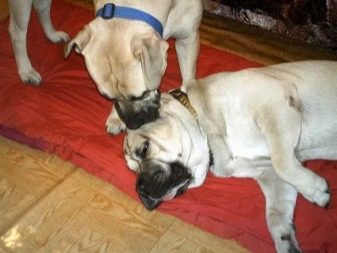
Wool hygiene
Hair care should be timely and regular. This will teach the dog to body hygiene, and therefore in the future he will not show anxiety or impatience when the owner will deal with his fur coat. It is necessary to comb out dead hair at least twice a week. So that the procedure does not seem uncomfortable for the animal, it is preferable to purchase a furminator for it, choosing the correct width of the comb-trimmer and the correct frequency of the teeth.
This device will not only allow the pet to get rid of hairs that interfere with the growth of new ones, but also provide a good massage for the dog. Therefore, animals love such procedures. You can also comb the wool with a natural bristle brush with frequent teeth. Particular attention to ridding the dog of excess hair must be given during molting.
This can help the dog, and reduce the amount of wool lying around in the house.


Bathing
Dogs of this breed have a characteristic dog smell. However, this fact does not give the owner the right to wash the dog almost every week. This can not be done, since frequent bathing leads to washing off the natural protective layer from the wool. As a result, the work of the glands is enhanced, which leads to a violation of the fat balance of dog skin.
No matter how the owner wants to get rid of the smell of the dog, he can bathe a dog of the breed Ca-de-Bo no more often than 2 times a month. For bathing, it is preferable to purchase a specialized detergent with a low concentration of acids and alkalis. When choosing a shampoo, it is necessary to ensure that it is designed specifically for dogs with a hard type of coat.
Occasionally, dry shampoo can be used for washing, rubbing it into dog hair and combing it with a special brush.
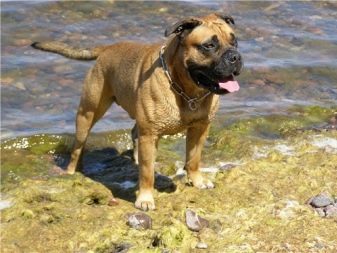
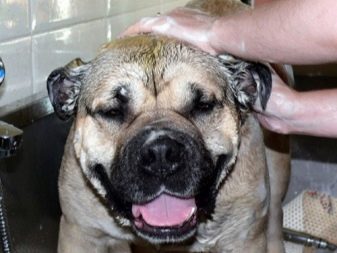
Ear and eye cleaning
Despite the fact that dogs of this breed are not prone to ear infections, it is still necessary to examine their ears. When earwax appears, it must be disposed of with a cotton swab or disc moistened with a drying agent. You cannot use cotton buds to clean your ears, as if you accidentally carelessly move them, they can cause damage to the eardrum.
Eyes also need regular inspections and hygiene. Any foreign particle entering them must be removed with a slight tangential movement in the direction of the internal corners. To do this, use a special lotion or brewed tea. If the pet’s eyes turn red, watery or sour, it is urgent to consult a veterinarian who has been observing the dog since childhood.
An examination specialist will identify the problem and select the appropriate treatment.
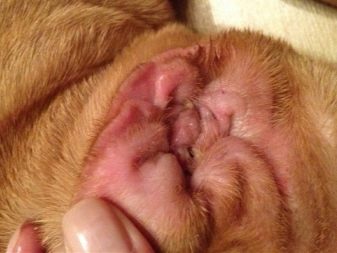
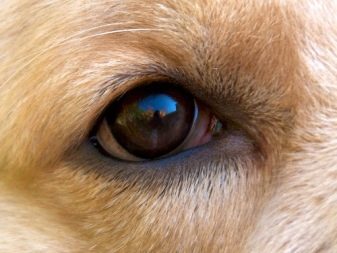
Teeth
Few dog breeders think that besides ear and eye hygiene Of particular importance is hygiene of the mouth. Ca-de-bo teeth, like people, without proper brushing quickly become yellowish, and in addition, they are prone to tartar formation.Preventive cleaning can be carried out in a salon, however, sooner or later the owner will have to master it independently, making the procedure an integral part of the general hygiene examination.
For these purposes, you can buy rubber toys for your pet. Also, solid sweets from pressed bones can be a good prevention. Plaque should be removed approximately twice a month: if you do this more often, you can damage the tooth enamel. For cleaning, you can use special nozzles on the fingers.
Those who do not dare to put their fingers in the jaws of a pet acquire special brushes. Dogs have their own toothpastes, which is why hygiene products that people use are completely unsuitable for them.
The taste of these pastes is neutral, in addition, zoos do not provoke the appearance of allergies.
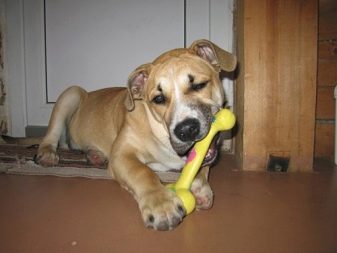
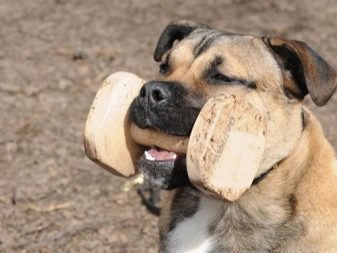
Claw care
Whoever says that the claws of the Ca de Bo stitch naturally, this is not so. The owner has to cut them on his own so that this does not affect the dog's gait and its manner of movement. In addition, long claws can cause deformation of the fingers on the fore and hind legs. Dog manicure will be concluded in regular shortening of claws by clawing.
Burrs and notches will have to be cleaned with a file.
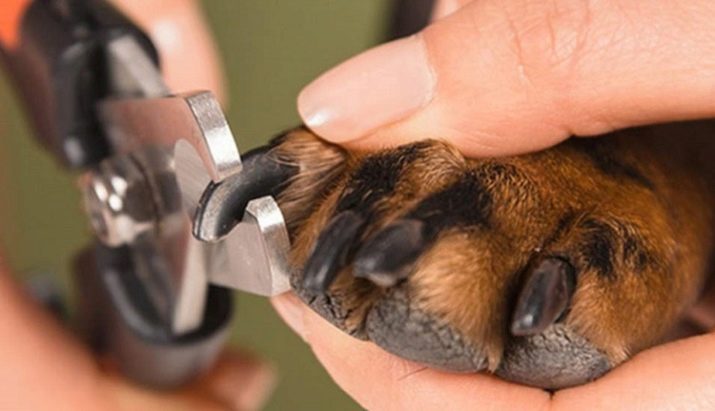
Walks
Walking, of course, is necessary for the proper development and strengthening of the pet's immunity. Of course, in bad weather this should not be done, after walking it is necessary to train the animal to wipe its paws so that the dirt does not stretch for it throughout the house. In addition, dirty feet can cause any infection.
After each walk, you must examine the dog for ticks or fleas. If parasites are found, you need to urgently consult a veterinarian who will help fix the problem. It is also impossible to procrastinate with fleas because they multiply quite quickly.
And this means that the scale of the problem can complicate the treatment process.
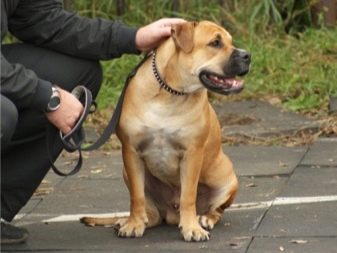
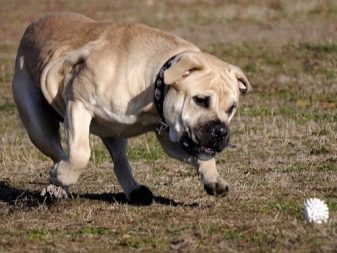
Feeding
You need to feed the pet correctly, having initially decided on the type of diet. If dry industrial food is chosen as the basis of food, it is worth looking for premium products for the dog. Natural food should be dietary. Particular attention should be paid to the diet, while the puppy is small and prone to rapid weight gain.
If he is fed with natural food, then along with it he needs to be given vitamin top dressing. During tooth growth, special attention will have to be paid to the dosage, in addition, vitamins will also have to be alternated. This is discussed with a specialist, because the owner himself is unlikely to choose the right option.
A third of the portion for each feed should be lean meat.
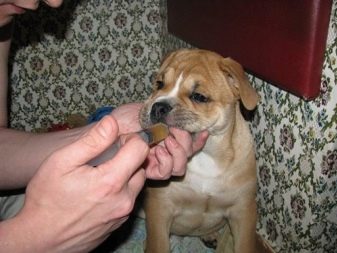

It can be either chicken, or turkey or veal, beef. It is preferable to choose sinewy pieces for food that better affect the functioning of the digestive system of the Ca de Bo. In addition to meat, he needs offal and fish (both marine and oceanic). In addition to these products, the diet of the Spanish mastiff should also include fruits and vegetables. Also kefir, cottage cheese, eggs are useful for him.
Neither an adult dog nor a puppy should be given legumes and cabbage, homemade preserves, river fish, sweets, sweets, flour, milk. Regardless of the meal time, the dog should always have its own bowl of fresh water. You cannot force an animal to extract water on its own, because in this case it will climb into a bathtub, sink, or even a toilet bowl.
Water for these dogs needs bottled or filtered, boiled for drinking is not suitable.
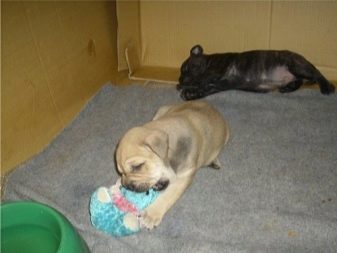
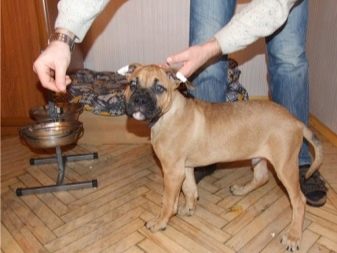
Parenting and training
It is necessary to engage in socialization and training of ca-de-bo from the first day of the appearance of the animal in the house. Of course, the beginning of socialization is the period that he spent before the purchase, while in the nursery. A mother-dog is engaged in his training from birth, accustoming to primary skills of interaction with the outside world. She does not order, does not dictate her terms. The training that a person will carry out should be based on the same principles.
Given that the puppy is near his brothers and sisters from birth, a person tries to socialize him, periodically leaving him in the company of relatives. At the same time, brothers can be a little older than the pet itself. However, the owner must take into account the fact that adult males, left with each other, can start fights.
And therefore, communication with relatives at the pet should not be long.
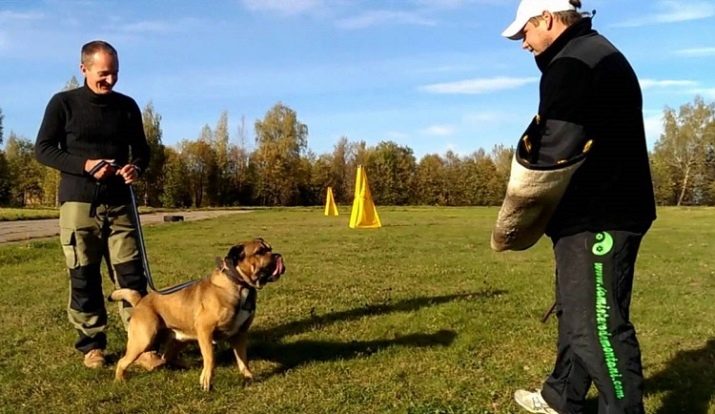
An important aspect of training is the fact that its foundations are laid in the first year of the dog’s life. Under no circumstances should a puppy be allowed to violate the rules of the house and act in a way that an adult dog should not. You can correct any deficiencies in the upbringing of a pet. Then it is very difficult, and some representatives of the breed will not allow it at all, trying to quickly take the leadership position, becoming the "leader of the family pack."
Correction of defects should not be postponed. It’s easier to get rid of them right away, and the sooner the breeder goes to a dog handler, the better. As for the basic commands, a novice will also cope with them: dogs quickly understand what is required of them, and in the absence of uniformity in training, they even quickly learn what was learned.
In order to improve the protective qualities of the pet, you can teach a course of protective and guard duty.
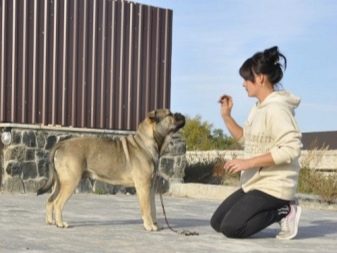
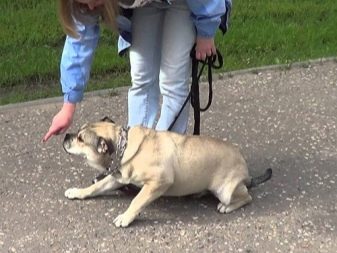
When training, in no case should be encouraged by dog aggression. This approach is a direct path to raising an angry and uncontrolled dog. Regardless of the fact that before dogs were bred as fighters for cruel spectacles, rude training methods in relation to them are unacceptable. As for the training of individuals for exhibition events, in this case, you should think about handling (the art of demonstrating a dog at an exhibition). Course training will be useful in that the owner at the right time in the exhibition will be able to emphasize the advantages of his pet, having beaten the existing shortcomings.
The style of this course may vary. (e.g. English, German, American). Such training to a greater extent increases the chances of the animal to win the exhibition. The specialist will teach the animal to move correctly and gracefully, as well as patiently withstand examinations.
This is especially important with procedures such as feeling and checking teeth.
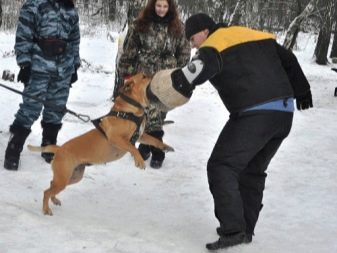

Suitable nicknames
The nickname should reflect the character of the dog, and therefore her choice must be approached with all responsibility. For example, these pets cannot be called Balls, Bobiks, just as they can not be assigned completely inadequate nicknames like Khmyr, Sour, Zhmot, Zaraz, Badass. You can name a dog by the name of an outstanding animal captured by history.
In addition, the name can be chosen with meaning, by type of color, by character.
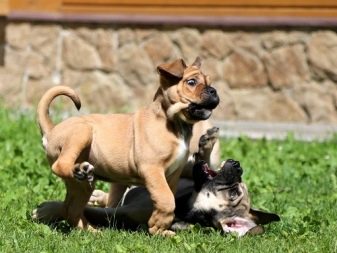
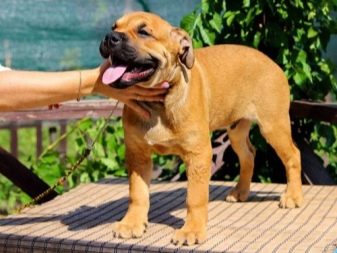
It does not have to be long at all. Ideally, this could be an abbreviated nickname for the name chosen for the pedigree. The dog will remember the short name quickly, and in the future will understand his nickname given for the pedigree.
For example, it is often enough to remember that a name consists of two syllables. The pet can be called Archie, Alf, Alma, Ralph, Loyd, Black, Berg, Burs, Beta. Good suitable nicknames can be: Brutus, Oars, Gaby, Greta, Doug, Zus. You can name the dog Ryan, Lamp, Gross.
Do not call the dog Gogol, Mozart, Wii, Pushkin.

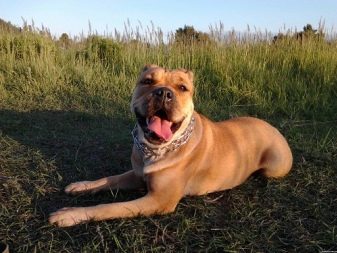
If you really want to stand out, it is better to pay attention to the nicknames that modern civilization evokes. For example, a dog can be given the nickname Google, Tweety, Stark. Even the name Schwartz will be understandable not only to the owner and dog, but also to others. At the same time, such a name is short, but memorable.
You can also give your pet the nickname Dark, based on its color. As for the nicknames Fluff or Max, they are better suited to cats, and do not correspond to the image of the animal.
He does not need nicknames in the Japanese spirit, which, although of particular importance, do not at all suit brutal dogs in sound.
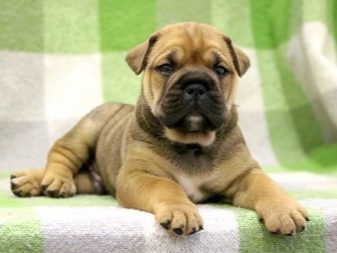

Reviews
Ca de bo is considered a loyal friend and pet, as evidenced by the reviews of the owners of these dogs. In the comments left on the Internet, breeders note that these dogs are members of families, they treat all household members equally well, love them and try to be in the spotlight. As for health, opinions are different here: some reviews indicate the excellent health of dogs, others indicate that they are prone to joint dysplasia, are allergic to certain foods.
Some representatives of the breed may not eat all the food they are given at all, due to the sensitivity of the digestive tract.
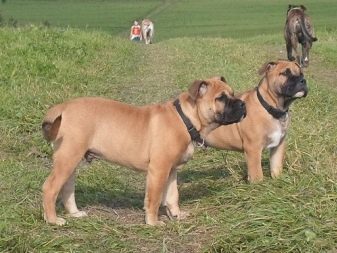
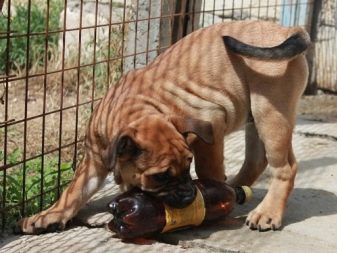
According to the owners, aggressiveness in dogs of this breed is not greater than in other relatives of the canine family. Their molting is average, intelligence is high, activity is different. Some individuals try to respond to any manifestation of attention from the owner, others are more sedate and react to what is happening more calmly. In general, according to breeders, the ca de bo are quiet, they do not create special problems in training, but they are not cheap for their owners.
Dogs do not howl, and therefore you can not worry about relationships with neighbors.
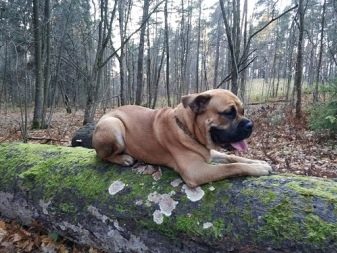
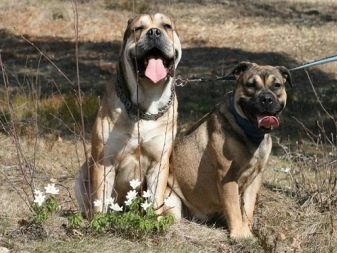
In addition, these dogs are far from always naughty when they are left in splendid isolation. Some of the pets are able to cheer up their owners, others can provide moral support to a sad household in their own way.
On the street, according to the reviews of the owners, dogs behave differently. Some representatives of the breed are calm and do not show much interest in others. Others, on the contrary, are curious and strive to study the surrounding space.
However, most Internet users note: the nature of these dogs reflects the correctness of their upbringing.
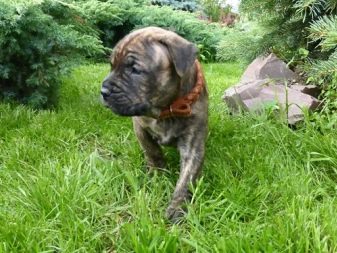
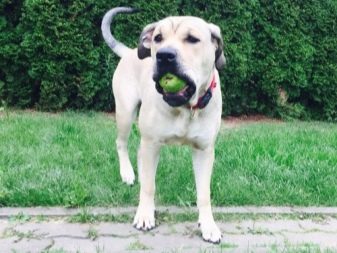
You can find out how the general course of training dogs of the Ca de Bo breed is going by watching the video a little lower.
